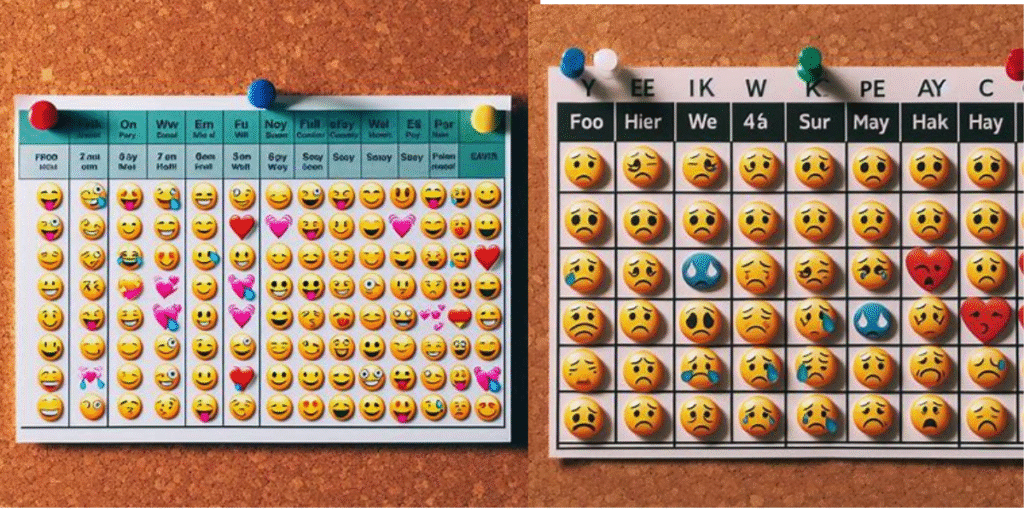Introduction: When Productivity Feels Like a Struggle
Have you ever felt utterly overwhelmed, spinning your wheels and working harder without seeing the results you desperately want? The frustration of juggling countless tasks, yet never feeling truly productive, is something many of us know intimately. I’ve been there, staring at a to-do list that just keeps growing, feeling exhausted before the day even begins, doubting my own abilities. What if the secret to triple your productivity isn’t working harder or longer? What if it’s a simple brain trick, a gentle, powerful shift you can make to work smarter, and more effortlessly?
This article introduces you to an effortless focus technique that transformed my relationship with work and energy. Paired with emerging insights into biohacking productivity, this approach can empower you to unlock lasting productivity without burnout. Let’s explore a compassionate, trustworthy path to reclaim your focus, amplify your efficiency, and nurture your mental wellbeing.
The Burden of Forced Productivity

Why “Hustle Harder” Can Backfire on Productivity
1. Productivity Isn’t Just About Time
Working long hours doesn’t always mean you’re getting more done. How your brain functions matters just as much as the hours you put in.
2. The Burnout Trap
For years, I thought success meant grinding non-stop. Instead, I found myself exhausted, stressed, and full of self-doubt, my brain just couldn’t keep up.
3. Mental Fog and Focus Problems
Stress and anxiety cloud your mind, making it really tough to concentrate or think creatively, even if you try harder.
4. It’s a Common Struggle
This isn’t just my experience, many people worldwide face burnout and struggle because their brains aren’t getting enough rest.
5. The Key: Work With Your Brain, Not Against It
Being three times more productive doesn’t mean working harder. It means understanding how your brain works and finding ways to support its natural rhythms.
Discovering the Effortless Focus Technique

The effortless focus technique isn’t about grinding through distractions with brute force. It’s a neuro-friendly way of aligning your mental state for peak attention and flow, those times when work feels almost effortless and deeply satisfying. Imagine turning on a switch that tells your brain, “It’s time to focus fully,” without the usual internal resistance.
Here’s how it looked for me:
- Before I knew this technique, my days were reactive and chaotic. Interruptions shattered my concentration.
- I started experimenting with short, intentional mindfulness pauses before diving into work. It was about calming the mental noise, not eradicating it.
- By purposefully directing my attention and acknowledging distractions without judgment, focus naturally deepened. Tasks that once felt mountainous became manageable.
- Over weeks, my productivity doubled and then tripled—not because I worked longer, but because my mental energy stayed clear and directed.
Biohacking Productivity: Enhancing Your Brain’s Potential
Biohacking productivity is often portrayed as complex, but at its core, it’s about simple adjustments that sync your body and brain for optimal performance. This includes habits that influence your brain chemistry and energy, supporting that effortless focus.
For me, a few biohacks made a huge difference:
- Regulating sleep cycles for restorative rest.
- Hydration and balanced nutrition to fuel brain function.
- Incorporating short movement breaks to boost blood flow.
- Using ambient sounds or white noise to drown out distractions.
- Tracking peak energy patterns to schedule critical work.
These small, intentional changes complement the effortless focus technique, creating a productivity ecosystem that supports resilience and creativity without stress.
The Science Behind Effortless Focus and Biohacking

1. Two Brain Modes: Daydreaming vs. Focus
Your brain flips between two main modes: default mode (where you drift or daydream) and task-positive mode (where you focus completely). This natural switch helps balance rest and work.
2. Distractions and Stress Can Hijack This Switch
When distracted or stressed, your brain can’t switch effectively to focus mode. This hijacking drains energy and makes it tough to concentrate or get things done.
3. The Effortless Focus Technique: Your Brain’s Reset Button
This technique helps activate the prefrontal cortex, the brain’s focus control center, boosting working memory and regulating your attention naturally without strain.
4. Biohacking Productivity: Balancing Brain Chemicals
Biohacking productivity means tuning your brain’s chemicals like dopamine and serotonin, which control motivation and mood. When balanced, these chemicals help you enter “flow state”, a deep, energized focus that makes work feel effortless and stress-free.
5. Flow State: Where Effort Meets Ease
In flow, your productivity skyrockets, and stress melts away because your brain is wired to enjoy the work it’s doing. That’s the power of combining the effortless focus technique with biohacking productivity.
Real-Life Stories: From Overwhelm to Flow
Maya’s Journey: From Burnout to Balance
Maya is a single mother and a busy freelancer juggling multiple roles. She was overwhelmed, constantly feeling like she was running behind, caught in a cycle of burnout. Like many, she believed that working harder was the only way to succeed.
But then, she discovered an effortless focus technique, a simple yet powerful way to calm her mind and sharpen her focus. Combined with daily meditation and prioritizing good sleep, everything changed.
Maya admits, “It felt like magic, I was getting more done in less time, without the panic.”
Her story reminds us that productivity doesn’t mean pushing through exhaustion; it’s about working smarter and cultivating compassion for ourselves.
Rahul’s Experience: Mastering Mental Energy Through Biohacking
Rahul, a tech startup founder, was constantly racing against deadlines and struggling with mental fatigue. He realized that his energy levels directly impacted his creativity and leadership.
By applying biohacking principles, tracking his hydration, meal timing, and even light exposure, he optimized his cognitive energy levels.
This wasn’t about drastic changes but small, scientifically-backed tweaks that made a big difference.
The results? Rahul started finding creative solutions faster, making confident decisions, and leading his team with a renewed sense of clarity and calm.
His journey illustrates how biohacking productivity elements, even simple adjustments, can help you maximize focus and reduce stress naturally.
Practical Steps to Start Today

If you’re ready to try this brain trick and biohacking productivity approach, here are practical steps:
- Set Intentional Start Rituals: Before work, pause for 2-3 minutes. Close your eyes, breathe deeply, and set a clear intention to focus.
- Use Timed Work Bursts: Work for 25-minute bursts with 5-minute breaks (Pomodoro technique). During breaks, engage in movement or mindfulness.
- Hydrate and Nourish: Drink a glass of water before working, and eat protein-rich snacks to support brain chemicals.
- Track Your Energy: Note when your focus peaks. Schedule demanding tasks then.
- Create a Distraction-Free Zone: Minimize phone notifications and clutter in your workspace.
- Practice Self-Compassion: If focus falters, gently bring your attention back instead of self-criticism.
FAQs
Q1: How quickly can I expect results with the effortless focus technique?
Results vary, but many notice improvements within days. Consistency over weeks solidifies new mental habits.
Q2: Is biohacking productivity safe for everyone?
Yes, when it involves simple lifestyle adjustments like hydration, sleep, and movement. Avoid complex supplements without guidance.
Q3: What if I’m easily distracted?
That’s normal. The technique teaches you to acknowledge distractions without judgment and refocus gently.
Q4: Can this help with anxiety and burnout?
Yes. It balances brain chemistry and reduces stress, creating space for clearer thinking and emotional resilience.
Q5: Do I need special tools or apps?
No. You only need your awareness and willingness to try small changes.



